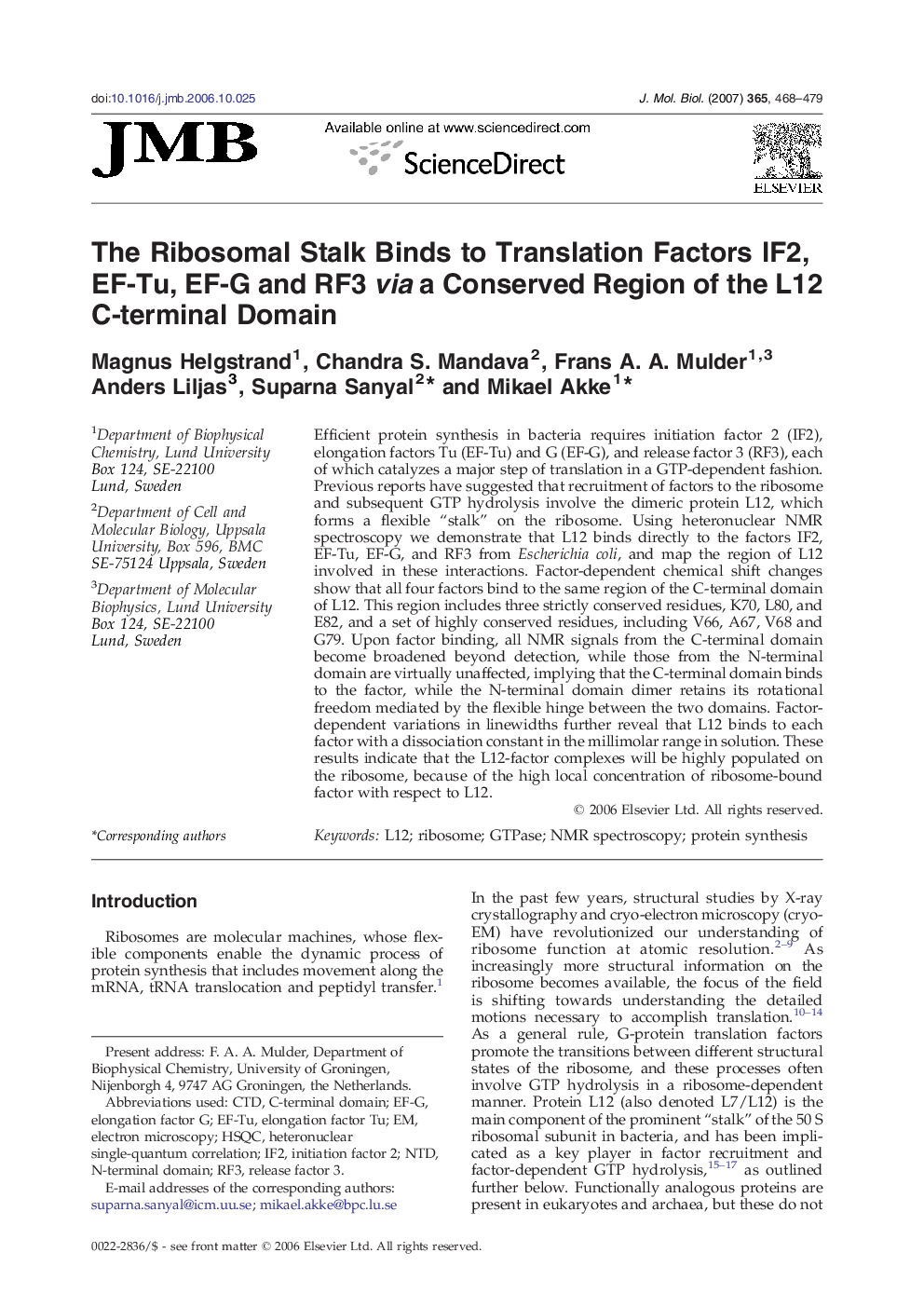| Article ID | Journal | Published Year | Pages | File Type |
|---|---|---|---|---|
| 2188566 | Journal of Molecular Biology | 2007 | 12 Pages |
Efficient protein synthesis in bacteria requires initiation factor 2 (IF2), elongation factors Tu (EF-Tu) and G (EF-G), and release factor 3 (RF3), each of which catalyzes a major step of translation in a GTP-dependent fashion. Previous reports have suggested that recruitment of factors to the ribosome and subsequent GTP hydrolysis involve the dimeric protein L12, which forms a flexible “stalk” on the ribosome. Using heteronuclear NMR spectroscopy we demonstrate that L12 binds directly to the factors IF2, EF-Tu, EF-G, and RF3 from Escherichia coli, and map the region of L12 involved in these interactions. Factor-dependent chemical shift changes show that all four factors bind to the same region of the C-terminal domain of L12. This region includes three strictly conserved residues, K70, L80, and E82, and a set of highly conserved residues, including V66, A67, V68 and G79. Upon factor binding, all NMR signals from the C-terminal domain become broadened beyond detection, while those from the N-terminal domain are virtually unaffected, implying that the C-terminal domain binds to the factor, while the N-terminal domain dimer retains its rotational freedom mediated by the flexible hinge between the two domains. Factor-dependent variations in linewidths further reveal that L12 binds to each factor with a dissociation constant in the millimolar range in solution. These results indicate that the L12-factor complexes will be highly populated on the ribosome, because of the high local concentration of ribosome-bound factor with respect to L12.
